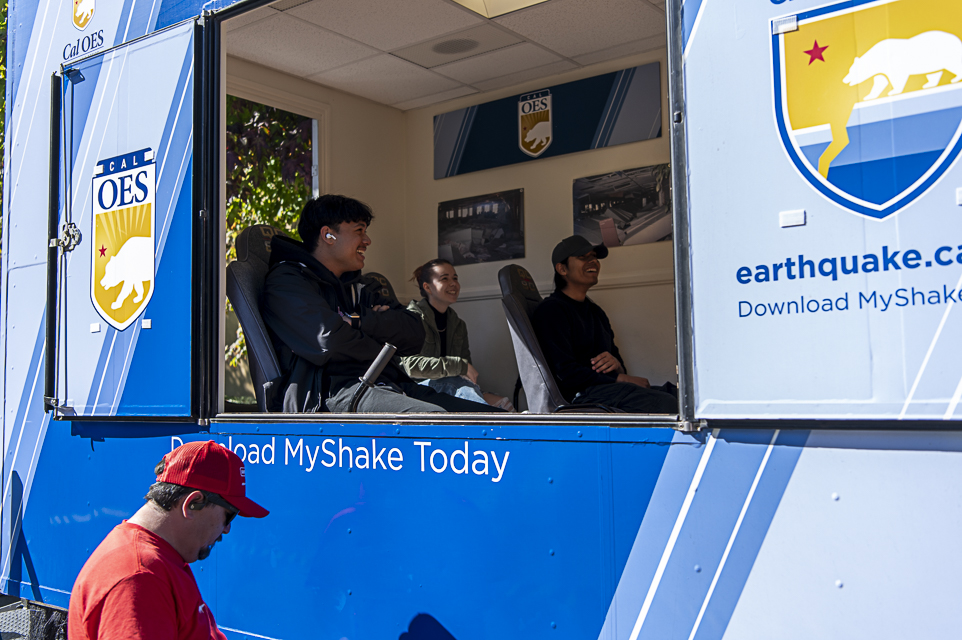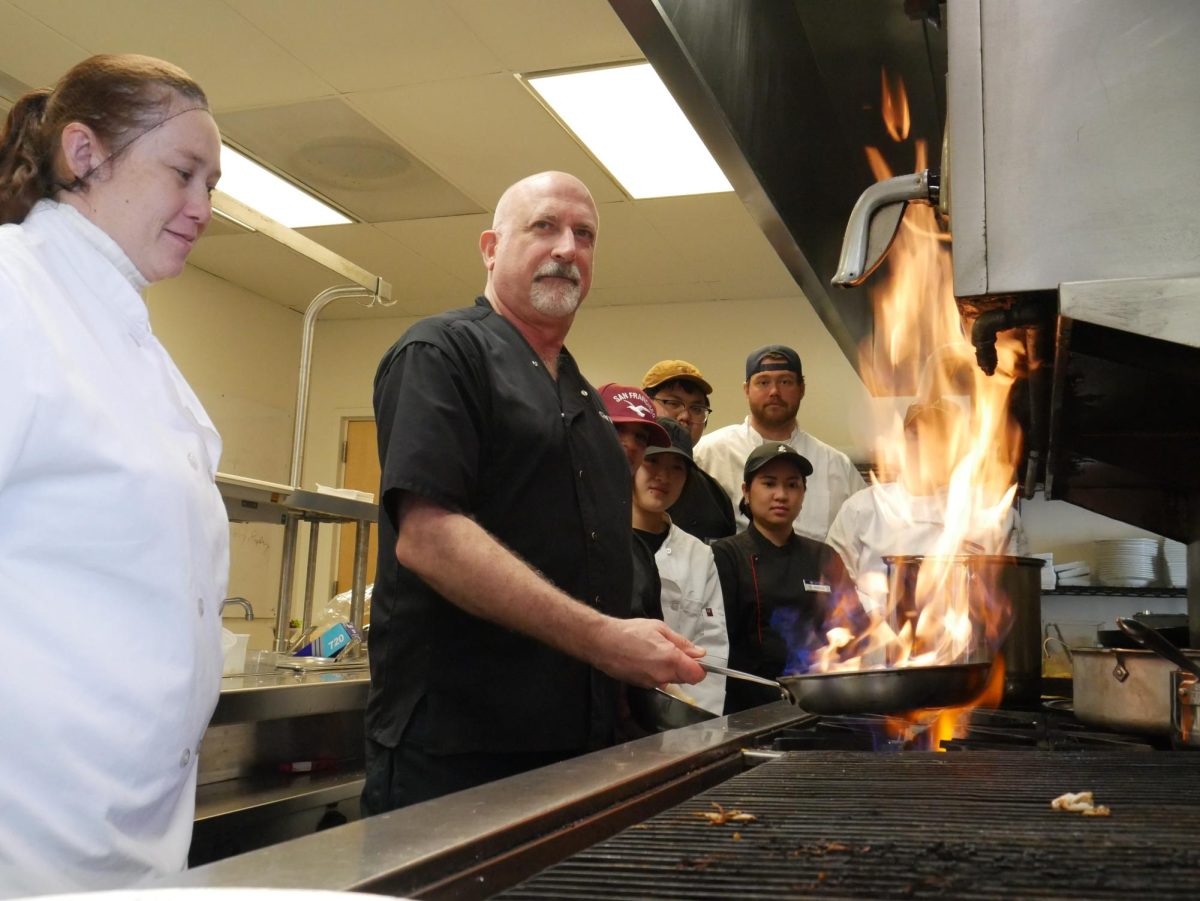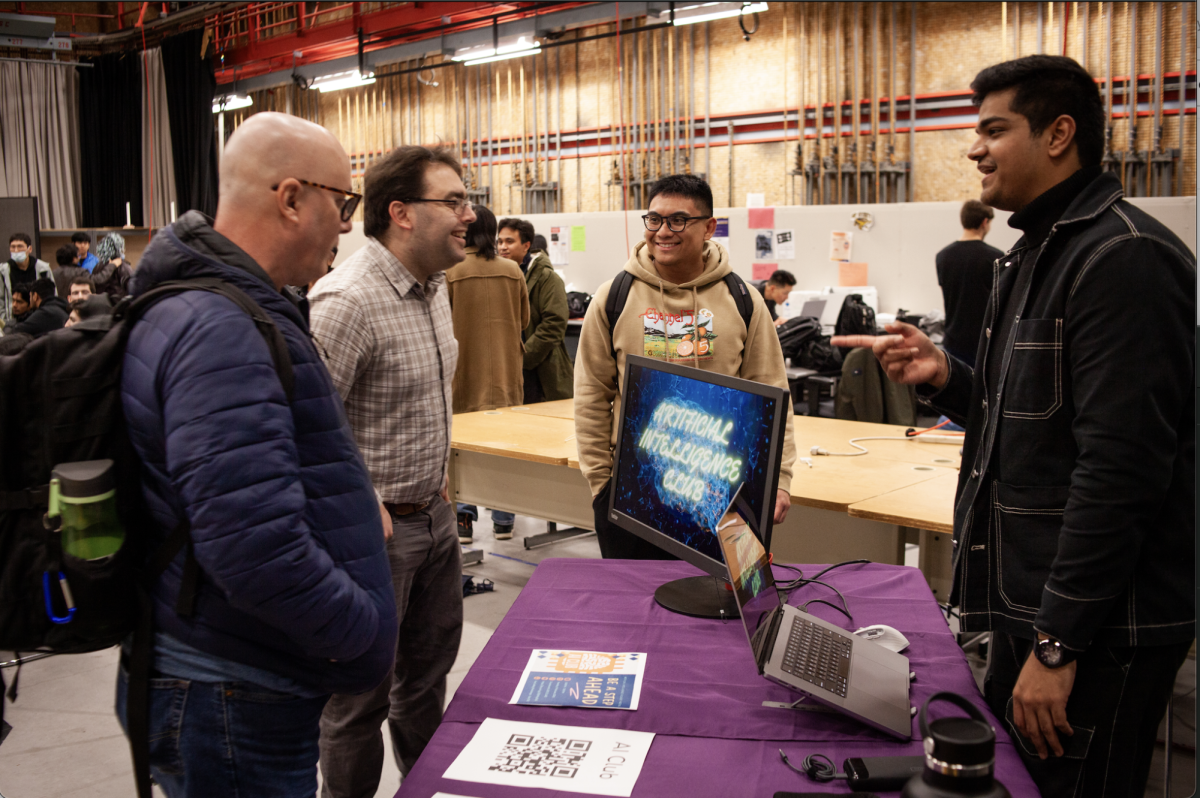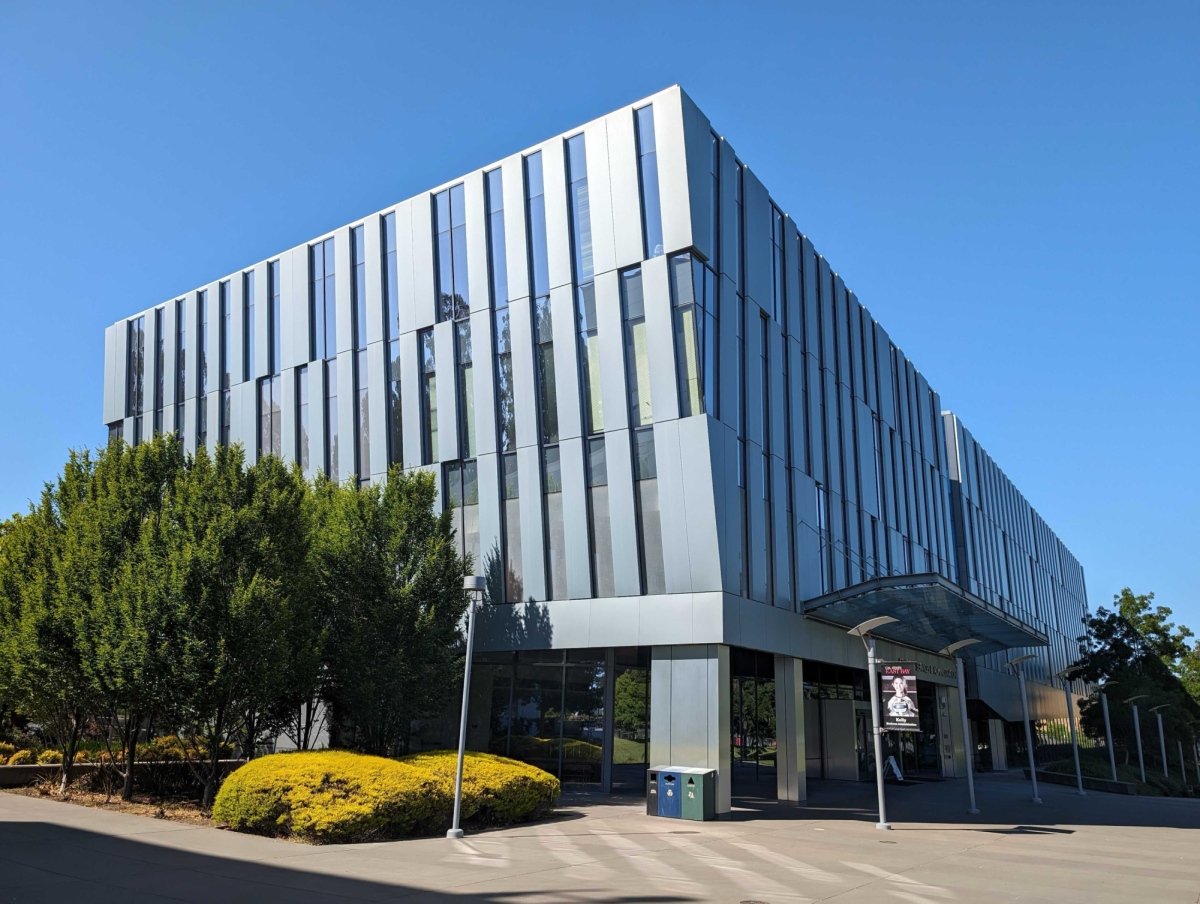The California Governor’s Office of Emergency Services hosted a simulation at San Francisco State University on Thursday morning to raise awareness about earthquake safety and preparation.
After the tour’s launch in Sacramento, SFSU becomes the second stop on a statewide tour that will include seven cities across California, with plans to visit Monterey, Santa Barbara, Los Angeles, Riverside, and San Diego counties.
Participants were invited to sit in a moving trailer that simulated the strength and movements of quakes ranging from 3.0 to 7.0 magnitude.
“I think coming here was such a priority just because we want to make sure students and everybody in the surrounding area is prepared,” said Mariah Bickham, a public information officer for the California OES. “If and when an earthquake does happen you guys have the resources and know how to handle it.”
According to a press release by the California OES, the tour will culminate in a statewide earthquake drill called the Great California ShakeOut Day on Oct. 19.
Despite San Francisco’s notoriety for being an earthquake prone area, there are people not native to the area who are unaware of proper safety measures in the event of an emergency, according to Education Outreach Team Member Jon Gudel.
“If something were to happen here, they would be away from their family or friends or comfort zone,” Gudel said.
For some participants, the simulator laid down the reality of living in a city where earthquakes are an ever-present possibility.
“If I don’t think about that [emergency measures] previously, I have no idea what I would have done if an earthquake hit because no one has actually told me what to do and I’ve never actually looked it up,” said Taylor Mogavero, one of the participants.
Mogavero, who is also a climate action coordinator at SFSU, said that being from Florida meant she was uneducated on what to do in the event of a quake.
“We don’t have earthquakes; that’s not a thing. It’s never been something that’s been on my mind,” Mogavero said. “I definitely think I’ll take it a little bit more serious now after feeling that.”
Improving awareness of earthquake safety is a major goal for the California OES, part of that includes educating people about the MyShake app.
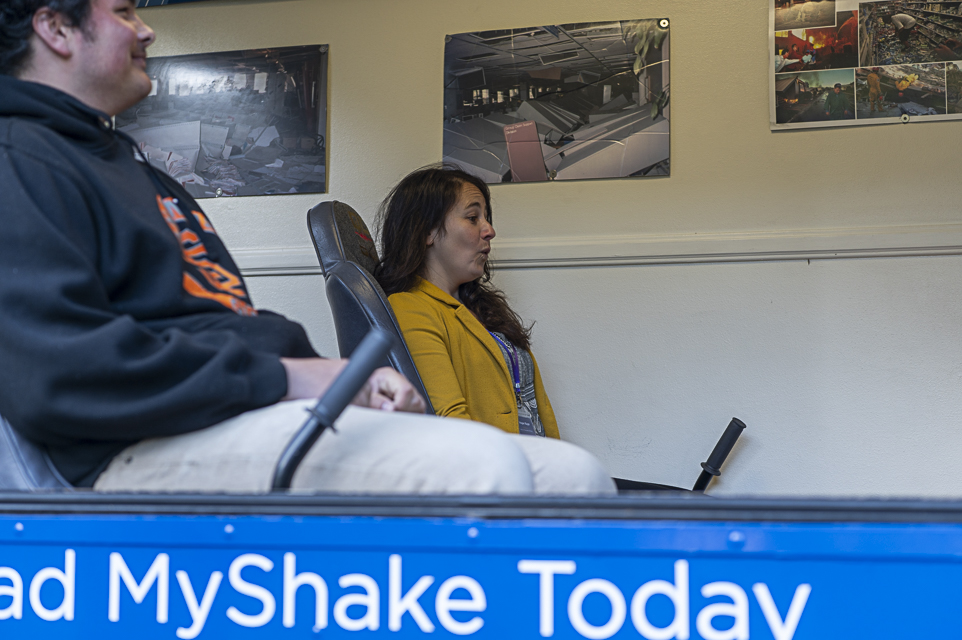
Matthew Ali
According to Gudel, the app is an early alert program that notifies people of seismic activity in advance in order to give them time to prepare or get to safety.
“I know I have a lot of apps on my phone, but none of them could potentially save my life,”
Gudel said. “You could get up to 30 seconds of notification before you actually feel shaking.”
The MyShake app was developed at UC Berkeley, which continues to maintain and update the technology as needed, according to Gudel. The Governor’s Office funds research and outreach.
“We have meetings with them every week and constant communication with them,” Gudel said.
Ultimately, the goal of the tour is to raise awareness in order to maximize the number of people downloading the MyShake app and participating in the ShakeOut Day, according to Bickham.
“We’re hoping we get a lot of people to come out here and really understand what an earthquake is and how to be best prepared so you aren’t caught off guard,” Bickham said.
Participants like Gabrielle Werst were grateful for the resources provided at the simulation.
Originally from Oregon, Werst was aware of the dangers earthquakes posed to Californians but remained uneducated on safety measures after moving to the city. Participating in the simulation opened her eyes and gave her much needed knowledge.
“I like having this and getting more information,” Werst said. “We asked a lot of questions because we’re unsure of what to do when an earthquake happens.”
For other participants, the simulator was an opportunity to educate others. SFSU professor Jenna Wong, who teaches civil engineering, filmed her ride in the simulator for her students.
Wong hoped to bring her students back to the simulator to educate them on engineering as it related to seismic activity.
“This kind of broadens their perspective on what they’re designing for,” Wong said. “This was a really exciting way to expose our students to the reality because most students these days have not experienced a large magnitude earthquake.”
Educating students was the driving factor behind efforts to bring the simulation to campus, according to Hope Kaye, director of SFSU’s Office of Emergency Services.
Kaye initially reached out to California OES three to four months before it finalized the locations for the tour in order to coordinate.
‘I’d heard about them coming to campus before and had talked to a couple of other partners in the city and the state about it,” Kaye said.
A large motivation behind the drive to bring California OES and the quake tour to campus is the desire to make emergency safety and preparedness easier to access, according to Kaye.
“Earthquakes are, for me, an equity issue,” said Kaye. “When an emergency happens of any kind, vulnerable populations are going to be the most impacted.”
Making safety and emergency preparedness more accessible is the top priority for students, said Kaye — but ultimately the university wants to make that process more engaging, as well.
“I think bringing something like this to campus, there’s something that’s also kind of fun about the simulator — so it’s a way to engage people on the topic and get them to start asking the question ‘Hey, what are we doing for earthquake preparedness on our campus and how do we keep ourselves safe?’”





